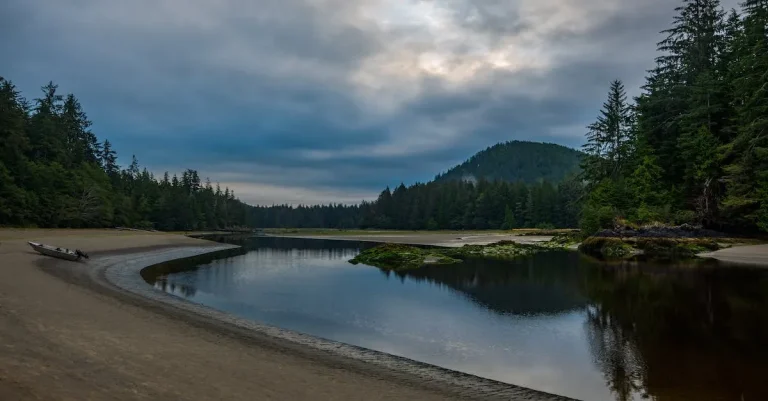What Biome Is Southern California?
Southern California is known for its sunny, mild climate and diverse landscape. With mountains, deserts, beaches, and islands all found in the region, it may seem like multiple biomes are represented here. However, most of Southern California falls within the Mediterranean biome.
If you’re short on time, here’s a quick answer to your question: The Mediterranean biome best represents the natural vegetation and climate of Southern California.
Characteristics of the Mediterranean Biome
Hot, Dry Summers
The Mediterranean biome, which can be found in Southern California, is known for its hot and dry summers. The region experiences long periods of little to no rainfall, with temperatures often reaching over 100 degrees Fahrenheit.
This climate creates a challenging environment for plants and animals to thrive.
Mild, Wet Winters
Contrasting the scorching summers, Southern California’s Mediterranean biome experiences mild and wet winters. The region receives most of its annual rainfall during this season, with average temperatures ranging from the 50s to the 70s.
This seasonal variation in precipitation supports the growth and survival of various plant and animal species.
Plant Adaptations
The plants in the Mediterranean biome have developed unique adaptations to survive in the hot, dry summers and mild, wet winters. Many plants in this region have thick, waxy leaves that help reduce water loss through evaporation.
Others have deep root systems that enable them to access water deep underground during the dry season. Some plants, like the California poppy, have the ability to go dormant during the summer months and come back to life when the rainy season arrives.
Additionally, the Mediterranean biome is home to a diverse range of plant species, including iconic ones like the coastal sage scrub, chaparral, and oak woodlands. These plants not only provide habitat and food for animals but also contribute to the overall biodiversity of the region.
For more information on the Mediterranean biome in Southern California, you can visit the National Park Service website.
Mediterranean Climate of Southern California
Southern California is known for its beautiful weather, with mild winters and warm, dry summers. This type of climate is referred to as a Mediterranean climate, which is characterized by its similarities to the weather found in the Mediterranean region of Europe.
Here are some key aspects of the Mediterranean climate in Southern California:
Coastal Influence
The coastal areas of Southern California have a significant impact on the region’s climate. The cool ocean breezes help to moderate the temperatures, keeping the coastal regions cooler in the summer and warmer in the winter compared to inland areas.
The marine layer, a blanket of fog that often rolls in from the ocean, is a common sight along the coast.
Rainfall Patterns
Rainfall in Southern California is relatively low, especially compared to other parts of the United States. The region experiences most of its rainfall during the winter months, with the majority of it occurring between November and March.
This means that the summers are typically dry, with little to no rain. However, it’s important to note that rainfall patterns can vary significantly from year to year, and drought conditions are not uncommon in the region.
Temperature Variations
The temperatures in Southern California can vary depending on the time of year and the specific location. In general, the coastal areas tend to have more moderate temperatures, with average highs in the 70s°F (20s°C) during the summer and lows in the 50s°F (10s°C) during the winter.
Inland areas, on the other hand, can experience hotter temperatures during the summer, with average highs reaching the 90s°F (30s°C) or even higher. The temperature differences between the coast and inland areas are often referred to as the “inland effect.”
The Mediterranean climate of Southern California makes it a desirable place to live and visit. The mild, sunny weather throughout much of the year allows for a variety of outdoor activities and contributes to the region’s thriving agriculture industry.
However, it’s important to be mindful of the potential for drought conditions and the need for water conservation efforts in this arid climate.
Mediterranean Ecosystems in Southern California
Southern California is home to a diverse range of ecosystems, but one of the most prominent and well-known is the Mediterranean ecosystem. This type of ecosystem is characterized by mild, wet winters and hot, dry summers, similar to the climate found in the Mediterranean region of Europe.
The Mediterranean ecosystem in Southern California is made up of three main types: chaparral, woodlands, and scrublands.
Chaparral
Chaparral is a unique and resilient ecosystem that can be found throughout the hills and mountains of Southern California. It is characterized by dense, woody shrubs and small trees that are adapted to survive in the region’s hot and dry conditions.
Some common plants found in chaparral include manzanita, chamise, and scrub oak. The chaparral ecosystem plays an important role in preventing soil erosion, providing habitat for a variety of animals, and even helping to reduce the risk of wildfires.
Woodlands
The woodlands in Southern California are characterized by larger trees and a more open canopy compared to chaparral. These woodlands can be found in areas where there is more water available, such as along rivers or in higher elevation areas.
Oak trees are a common sight in the woodlands, along with other species like sycamore and willow. These trees provide shade and habitat for a variety of wildlife, making the woodlands an important part of the region’s biodiversity.
Scrublands
Scrublands, also known as coastal sage scrub, are found along the coastal regions of Southern California. This ecosystem is characterized by low-growing shrubs and grasses that are adapted to the region’s coastal conditions, such as salt spray and sandy soils.
Some common plants found in scrublands include sagebrush, California buckwheat, and black sage. Scrublands provide important habitat for a variety of birds and small mammals, and they also help to stabilize coastal dunes and prevent erosion.
The Mediterranean ecosystems in Southern California are not only beautiful but also incredibly important for the region’s biodiversity and environmental health. They provide habitat for a wide range of plants and animals, help to conserve water, and play a crucial role in preventing soil erosion.
To learn more about the Mediterranean ecosystems in Southern California, visit https://www.nps.gov/samo/learn/nature/mediterranean-climate-zone.htm for more information.
Other Biomes Represented in the Region
In addition to the Mediterranean biome, Southern California is also home to several other distinct biomes. These biomes are characterized by their unique climatic and ecological conditions, which give rise to a diverse array of plant and animal life.
Let’s explore some of the other biomes found in this region.
Alpine
The alpine biome can be found in the higher elevations of Southern California, particularly in the mountain ranges such as the Sierra Nevada and the San Gabriel Mountains. This biome is characterized by its cold temperatures, strong winds, and rocky terrain.
It is home to unique species of plants and animals that have adapted to survive in these harsh conditions. Some examples include the bristlecone pine, which is one of the oldest living trees in the world, and the bighorn sheep, which is known for its impressive climbing abilities.
Desert
The desert biome is prevalent in Southern California, with vast stretches of arid lands such as the Mojave Desert and the Colorado Desert. This biome is characterized by its extreme temperatures, sparse vegetation, and sandy or rocky terrain.
Despite the harsh conditions, many plants and animals have adapted to thrive in the desert. Iconic desert species include the Joshua tree, the desert tortoise, and the elusive desert sidewinder snake. The unique adaptations of these organisms allow them to conserve water and withstand the blistering heat of the desert.
Marine
Southern California is also blessed with a diverse marine biome along its coastline, which spans the Pacific Ocean. This biome is characterized by its rich biodiversity and abundance of marine life. From kelp forests to tide pools, the marine biome offers a wide range of habitats for various species.
Whales, dolphins, sea lions, and countless species of fish can be found in these waters. The marine biome not only supports a vibrant ecosystem but also offers recreational opportunities for activities such as diving, surfing, and fishing.
Understanding the different biomes present in Southern California helps us appreciate the region’s rich natural heritage. Each biome is unique and offers its own set of challenges and opportunities for the organisms that call it home.
By preserving and protecting these diverse ecosystems, we can ensure a sustainable future for both the wildlife and the people who live in this beautiful part of the world.
Conclusion
In summary, while Southern California contains diverse geographic features and microclimates, the Mediterranean biome best characterizes the region’s natural vegetation and climate as a whole. With hot, dry summers and mild, wet winters, this biome supports chaparral, woodlands, and scrubland ecosystems unique to California.
Understanding the biome of Southern California provides important context for appreciating the native plants and animals adapted to thrive in this environment.








